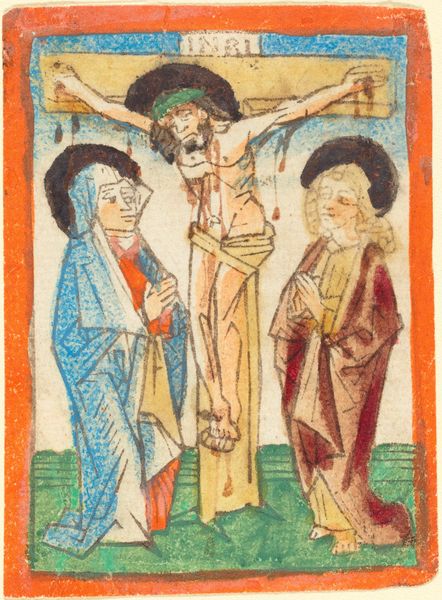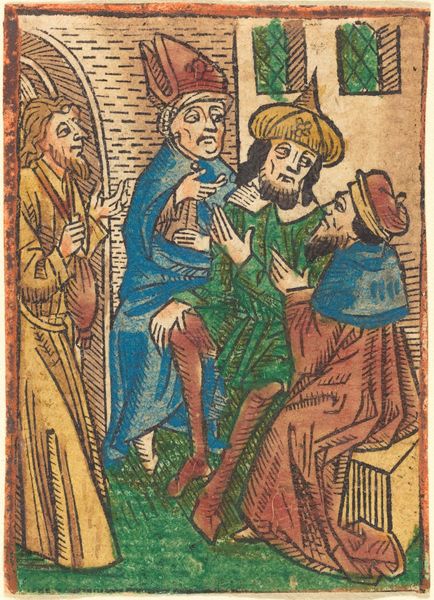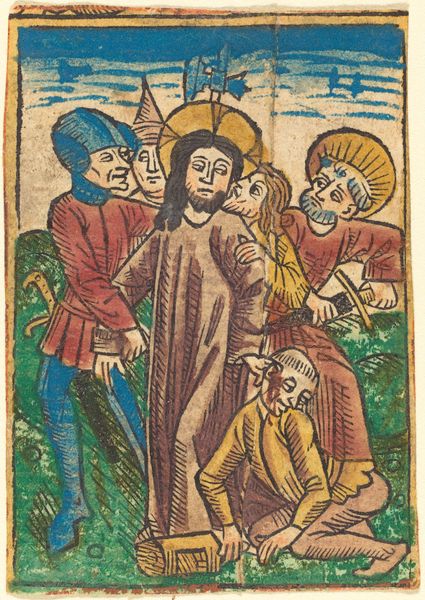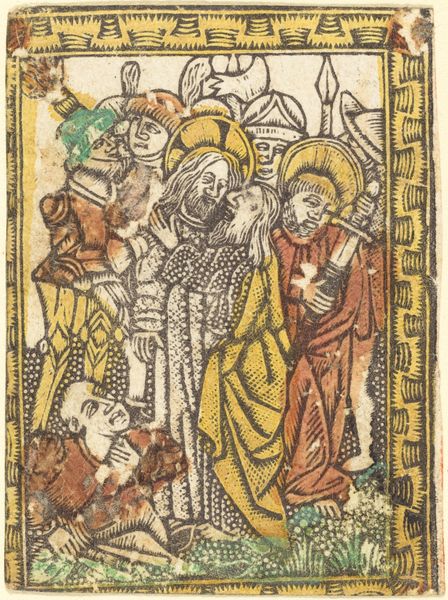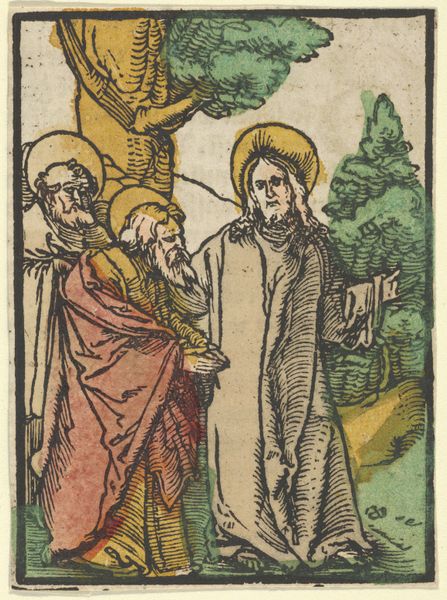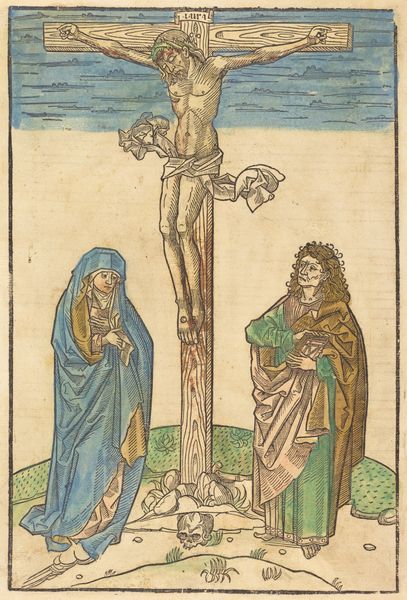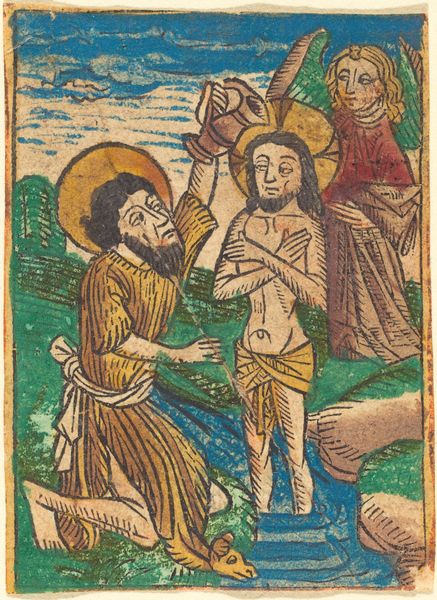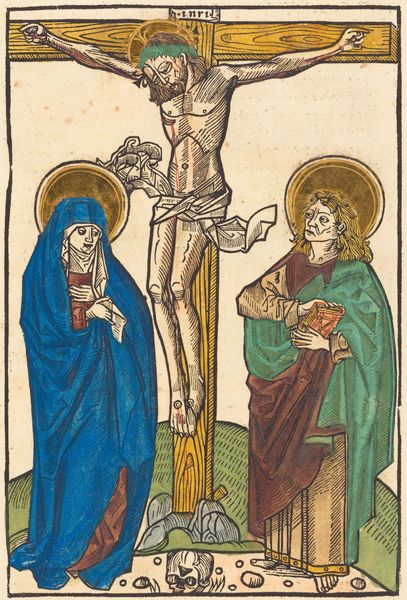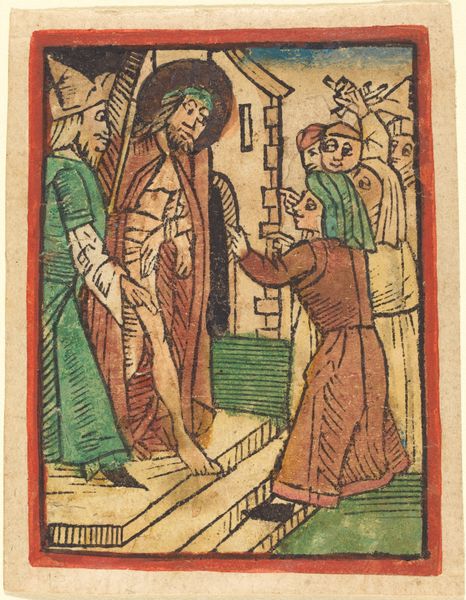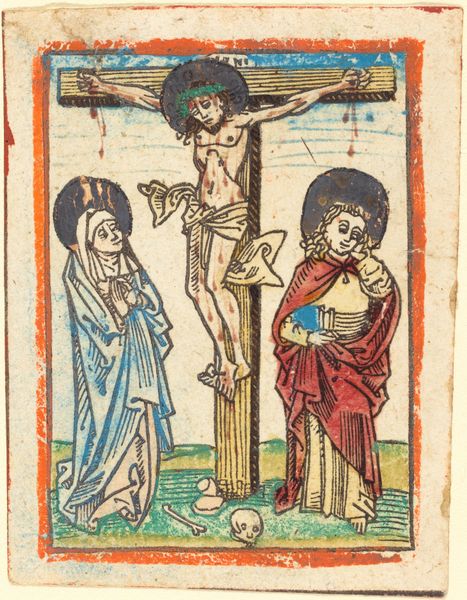
tempera, print, woodcut
#
medieval
#
narrative-art
#
tempera
# print
#
figuration
#
woodcut
#
history-painting
#
northern-renaissance
Copyright: National Gallery of Art: CC0 1.0
Curator: Today we're looking at a circa 1490 woodcut titled "The Crucifixion." Editor: It strikes me immediately with its somber palette, despite the application of color. The forms are rigid, and the composition is quite dense. Curator: As a print from the late 15th century, its existence speaks to the rise of print culture and the democratisation of religious imagery. These prints circulated widely, impacting how people understood the key narratives of Christianity. It provided access and promoted discourse. The composition reflects Northern Renaissance interests, particularly in figuration and narrative. Editor: I'm intrigued by the flattened perspective and the bold outlines. The artist is clearly less concerned with mimetic representation and more interested in the symbolic impact of the image. Consider how each figure has been afforded an equal status regardless of their relative depth in space. It defies a clear sense of foreground or background, instead relying on discrete bands of meaning. Curator: Yes, and those choices are interesting. While it's "The Crucifixion", what meaning can we derive by understanding the supporting cast? Mary and the disciples offer contrasting reflections of loss, while the crowd with their spears represents both authority and rejection. This reflects deep ambivalences regarding power dynamics of the time. It's a fascinating insight into both collective and personal anguish. Editor: You are spot on there. Visually, this is communicated through their rigid forms and controlled expressions; this adds an additional layer of severity. In tandem, these strategies make Christ’s agony all the more potent by visual juxtaposition. Curator: Thinking about audience reception during the time, the widespread dissemination of prints like these surely led to varied readings and understandings of suffering, and divine sacrifice across gender, class, and geography. How were women's experiences of sorrow or defiance recognized differently? What social values were reinforced, or challenged by this kind of artwork? Editor: Undoubtedly. As an artistic exercise, its brilliance is clear. From the expressive use of line, the artist created a powerful and enduring depiction of an eternal narrative. The artwork stands the test of time through its command of fundamental pictorial elements. Curator: Yes, indeed. Thinking through the narrative with social consciousness can provide new frameworks and appreciation to artistic traditions, offering new insight and promoting critical understanding and hopefully, social evolution.
Comments
No comments
Be the first to comment and join the conversation on the ultimate creative platform.
